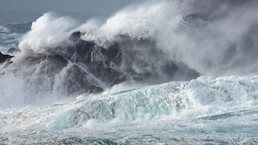To help navigate and understand the current cycle in the offshore-rig market, our offshore-drilling outlook provides a reference case for the evolving offshore markets for jack-ups and floating rigs (semisubmersibles and drillships) through 2035—delivering a view on market conditions and timing for recovery.
Executive summary
2019’s market started with some of the lowest activity levels seen in 20 years, with rig demand about 3 to 4 percent lower than it was in 2017. In that same vein, operators have not increased offshore-exploration capital expenditures. Although some premium rigs have been reactivated recently, we anticipate that the market will be slow to recover.
In 2018 alone, 37 jack-ups were retired, the highest number seen in the past five years. Despite these retirements, there was still an oversupply of jack-ups. Marketed utilization has been reduced to about 62 to 69 percent, and new contracts were for day rates that were an average of 15 percent lower than they were in 2017. For floaters, 20 rigs retired in 2018, which led day rates to increase 25 percent in 2018, accompanied by an increase in the number of fixtures signed.
Would you like to learn more about Energy Insights?
Additional 43 million barrels per day of crude from unsanctioned projects will be needed to meet 2035 demand
By 2035, we project that exploration and production companies will need to add 43 million barrels per day of new crude from unsanctioned projects to meet demand. Closing this gap will require additional output from both shale and offshore. We expect offshore to account for about 30 percent of this new crude production, with roughly half of the total offshore volume coming from deepwater and higher-cost ultradeepwater resources.

The West of Shetland comes of age
Rig demand: Market appears poised for medium- to long-term growth
As non-national-oil-company operators shift focus to deepwater fields because of increasing break-even costs of shallow-water fields, jack-up demand should grow 1 percent per year through 2035. Following this trend, utilization will recover to above 80 percent by 2023, driven by a large number of retirements and continued deferment of the order book. The chronic jack-up oversupply appears set to end, as extensive retirements of older and lower-spec rigs in the near future are expected to lead to a 9 percent decline in the overall jack-up fleet by 2035.
Over the course of 2019, floating-rig demand will drop slightly because of unstable oil prices, but growth—to the tune of 6 percent per annum between 2019 and 2027, then 2 percent per annum until 2035—is expected to follow. Key growth regions will be Africa, Brazil, and the Gulf of Mexico. We anticipate that supply will remain relatively stable through 2026, leading utilization to recover to 80 percent by 2026 and long-term floater-supply growth to reach about 13 percent by 2035.